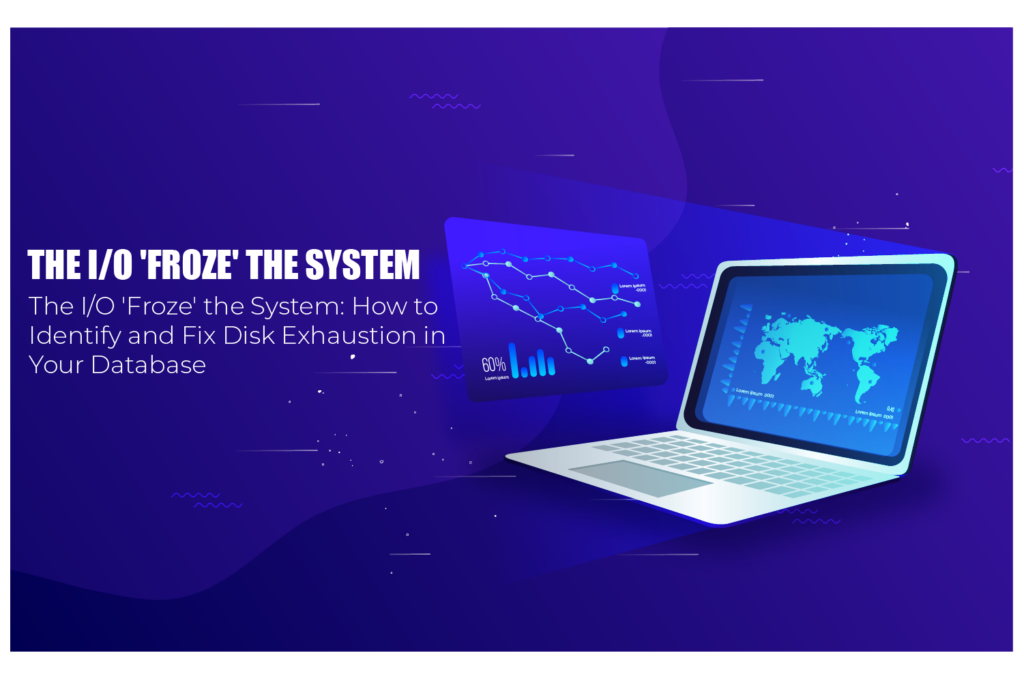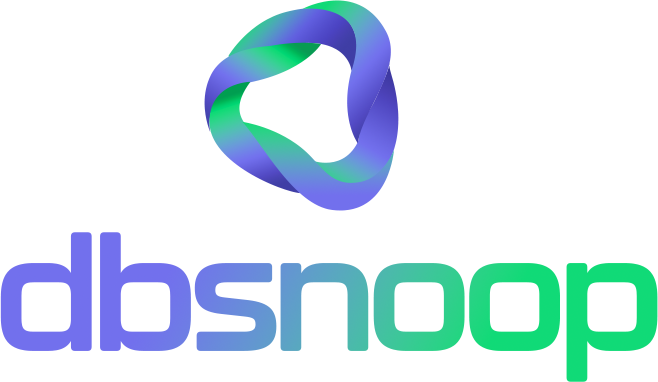

Imagine your data infrastructure is a high-performance delivery logistics system. Your CPU and RAM are a massive, automated distribution center, capable of processing millions of packages per hour. However, all these packages need to go out for final delivery using a single, poorly maintained dirt road full of potholes. It doesn’t matter how efficient your distribution center is; the speed of your entire operation is ultimately dictated by the bottleneck of that road. Congestion is inevitable.
This is a perfect representation of what happens when your database suffers from I/O (Input/Output) exhaustion. While high-level dashboards show calm CPU and memory, an invisible and paralyzing queue forms at the most physical and fundamental level: storage access. For SRE and DBA teams, this is one of the most enigmatic scenarios. There is no process at 100% CPU to blame, nor a memory leak to point to.
There is only a treacherous silence on the monitors as the entire system crawls, responding in seconds to requests that should take milliseconds. It’s the physical speed limit of your infrastructure, and it has the power to paralyze the operation and revenue without triggering a single conventional alarm.
What is Disk I/O and Why is it Your System’s Speed Limit?
Disk I/O refers to every read and write operation that your system performs on the storage (be it an SSD, HDD, or a cloud volume). Think of it as the maximum speed of a highway. No matter how powerful your car’s engine (CPU) is, you cannot go faster than the road’s limit allows.
In the database, every query that cannot be resolved entirely in memory needs to “go to the disk” to fetch the data. The main metrics that define this limit are:
- IOPS (Input/Output Operations Per Second): The number of read/write operations a disk can perform per second. Crucial for applications with many small, fast transactions (OLTP).
- Throughput: The amount of data (in MB/s) that can be read or written per second. Important for operations that move large volumes of data, such as reports and backups.
When your application’s queries demand more IOPS or Throughput than your disk can provide, I/O exhaustion occurs.
Symptoms of I/O Exhaustion: Warning Signs Before a Total Freeze
The first sign is rarely a technical alarm. It’s a call from the support team saying, “the system is very slow today.” To translate this complaint into a technical diagnosis, SRE and DevOps teams should look for:
- Increased iowait (Linux) or Disk Queue Length (Windows): These are the most direct infrastructure metrics. A high iowait means the CPU is idle, waiting for the disk to deliver data. A long disk queue means that requests are piling up.
- High Disk Latency: The time to complete a single read/write operation increases dramatically. What should take milliseconds now takes seconds.
- Degradation in COMMIT Time: Write operations take longer to be confirmed, as the transaction log needs to be written to the disk, which is overloaded.
- Queries That Are Fast “on Paper” but Slow in Practice: A query might have an excellent execution plan, but if it needs to read a lot of data from a slow, congested disk, its performance will be terrible.
The problem with the classic approach is that by the time these alarms go off, the system is already impacted. The work becomes reactive, focused on putting out the fire rather than preventing it.

The Real Causes of the Bottleneck: What Really Exhausts Your Disk?
I/O exhaustion is a symptom. The disease usually lies in how the application interacts with the database.
- Inefficient Queries and Full Table Scans: The number one cause. A query that needs to scan an entire table with millions of rows to find just a few records generates a massive amount of unnecessary I/O.
- Lack of Proper Indexes: Without an index, the database has no “map” to find the data quickly, forcing it to read the entire table (the Full Table Scan). Creating the right index is often the most effective solution.
- Inadequate Storage Architecture: Using low-performance disks (HDD instead of SSD) for transactional workloads, or poorly configured cloud volumes (IOPS provisioned below demand).
- Background Processes: Backup routines, heavy ETLs, or reports competing for the same I/O resources as the main application, especially if run during peak hours.
dbsnOOp: From Observability to the Root Cause of I/O in Minutes
Identifying that I/O is the problem is just the beginning. The critical question is: what is causing the exhaustion? This is where infrastructure monitoring tools fail and database observability becomes indispensable.
Connecting the Query to the Physical Impact on the Disk
dbsnOOp doesn’t just show that disk latency is high. It shows exactly which query, user, and application is generating the most I/O load. It correlates the logical activity of the database with the physical impact on the hardware, eliminating the guessing game. Instead of a war room between Devs and Infra, you have concrete data pointing to the root cause.
Intelligent Diagnosis for Quick Corrective Actions
Once the “villain” query is identified, dbsnOOp’s AI analyzes its execution plan and the table structure. It doesn’t just say, “this query is bad,” but often recommends the solution, such as “Create this specific index to reduce the I/O cost of this operation by 95%.” This transforms a complex infrastructure problem into a clear and actionable software optimization task.
Historical Analysis for Proactive Prevention
The platform allows you to visualize trends. You can see a query’s I/O cost increasing over weeks as the table grows. This enables the DBA and SRE teams to act proactively, optimizing the query or adding an index before it starts impacting production and causing the next system “freeze.”
Don’t let the silent bottleneck of disk I/O suffocate your application’s performance and your revenue. Shift from reaction to prevention.
Want to solve this challenge intelligently? Schedule a meeting with our specialist or watch a live demo!
Schedule a demo here.
Learn more about dbsnOOp!
Learn about database monitoring with advanced tools here.
Visit our YouTube channel to learn about the platform and watch tutorials.

Recommended Reading
- Database Automation: How to Unlock Growth and Innovation in Your Company: The main article talks about how to identify I/O problems. This post focuses on prevention. It explains how automating maintenance tasks, such as updating statistics and checking indexes, can prevent performance problems that lead to disk exhaustion from even starting.
- Text-to-SQL in Practice: How dbsnOOp Democratizes the Operation of Complex Databases: A common cause of high I/O is poorly formulated queries by business users. This article explores a technology that allows for safer and more controlled access to data. By democratizing access intelligently, you reduce the risk of “wild” queries that can bring down the system due to disk exhaustion.
- How dbsnOOp Frees Your Team for What Really Matters: Let the AI Work: Hunting down I/O bottlenecks is a task that consumes precious time from SRE and DBA teams. This article reinforces the business value of observability: by using dbsnOOp’s AI to quickly diagnose these problems, your team is freed from “firefighting” and can dedicate themselves to architecture and innovation projects that prevent future failures.

